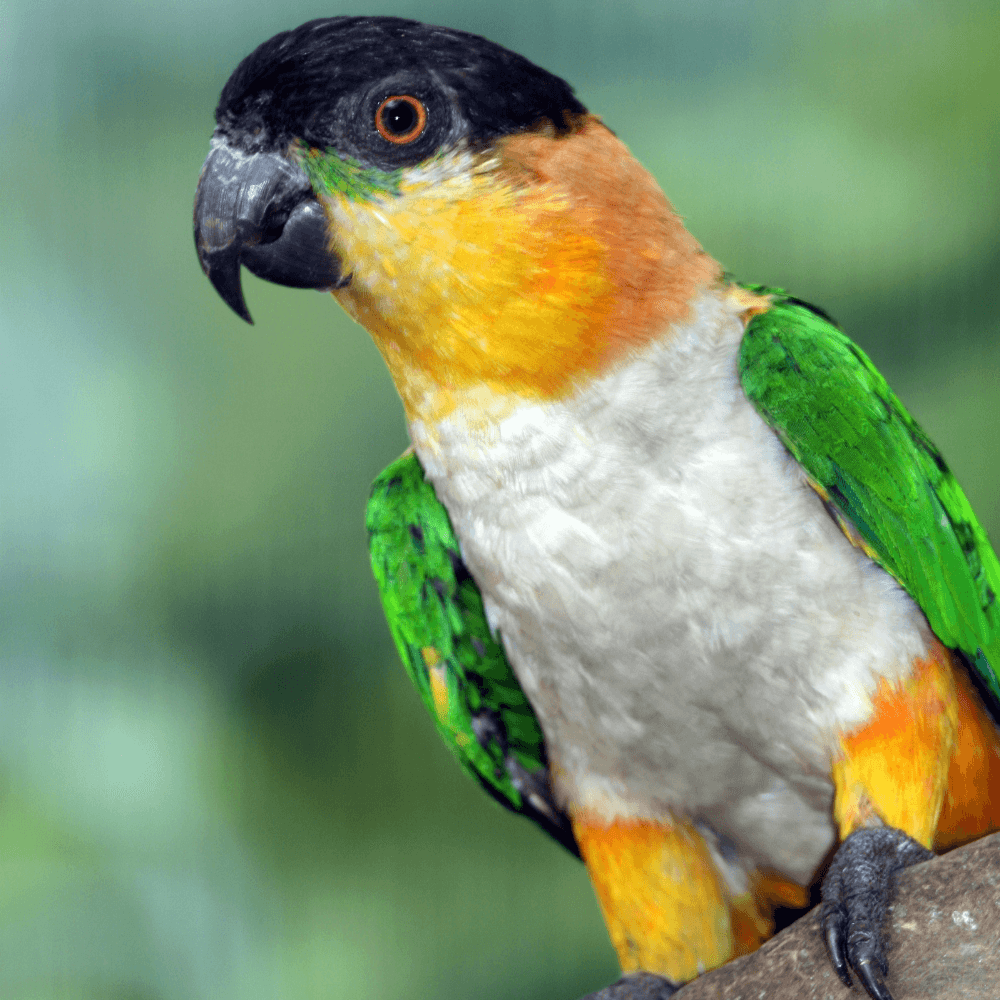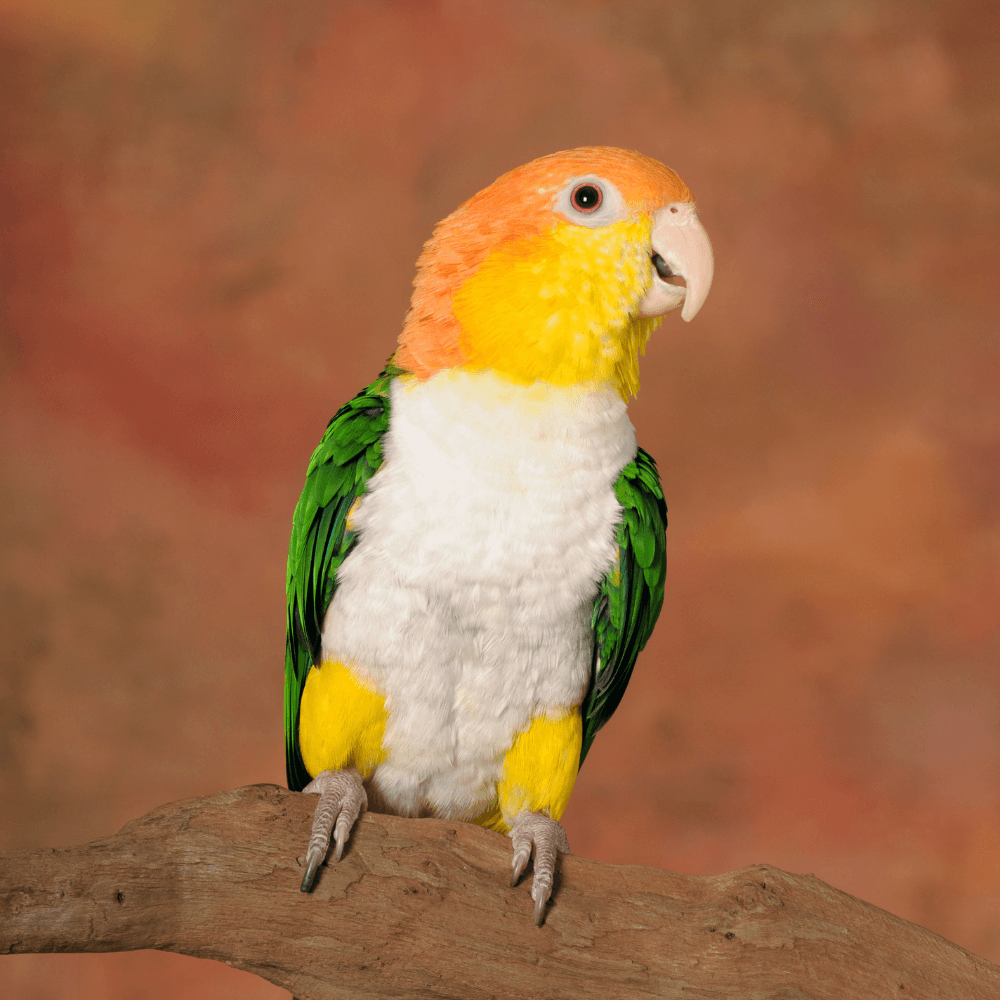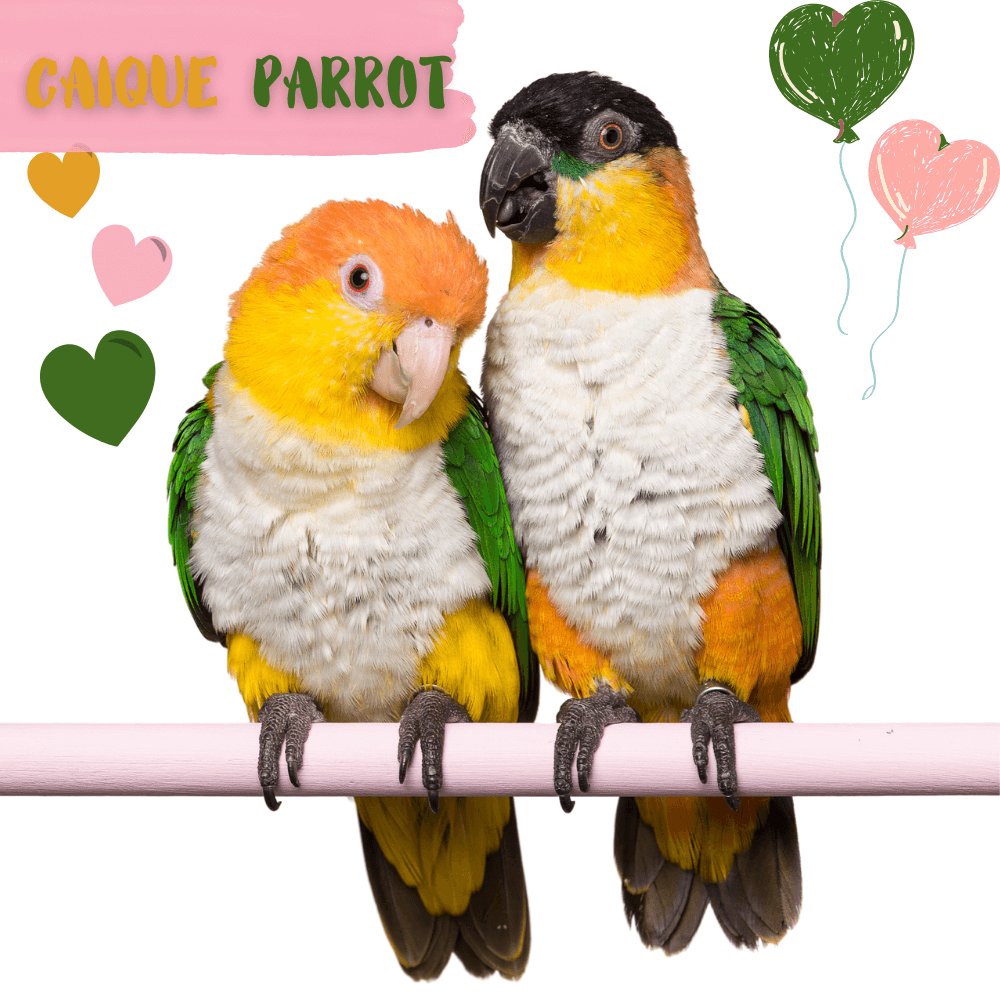Caique parrot: is a parrot that belongs to the genus Pionites. They are visually very attractive specimens. The genus includes two species that are differentiated by the colors of their head and belly. They are found in many as pets due to their small size, which makes it easier to care for them when it comes to infrastructure.
They are very intelligent birds, with unique, showy behaviors, and are less noisy than common parrots. Therefore, a caique, regardless of species, is the ideal option for those who want a colorful, playful, fun-loving, and fairly independent bird. So read on to learn more about these beautiful animals.
The habitat of caiques
The distribution of caiques covers a vast territory in South America. They are distributed between Guyana, southern Colombia, northern Venezuela, and a large part of Brazil.
In these countries, black-headed caiques ( Pionites melanocephalus ) tend to abound, while in southern Ecuador, northern Peru, and Bolivia, white-bellied caiques ( Pionites leucogaster) inhabit.
Thus, black-headed caiques inhabit the northern part of the Amazon River. The white-bellied caïques prefer the low areas south of the same river. Due to their poor flight ability, it is unlikely to find other populations in other areas bordering the riverbed.
Caiques have small but heavy bodies, and their short wings prevent them from traveling long distances. This is why their natural habitat is reduced.
Caique parrot personality
Physically, caiques are relatively small: they measure between 23 and 25 centimeters long. As mentioned above, the genus Pionites includes two species of caiques. Both are distinguished by the colors of their plumage.
The black-headed caique’s thighs and lower tail are orange, and its belly is white. The thighs and the lower part of the tail of the white-bellied caique are yellow in color. The name of the latter is a little paler and its belly, although it is white – as its name suggests -, sometimes also has yellowish tones. The wings of both species are generally green.
In both species, young birds display a strong yellow belly color that gradually lightens.
These differences in caiques plumage do not indicate sexual dimorphism, since males and females are physically the same. It can be said that the females are generally a little smaller than the males. However, this is not always true. DNA sexing is therefore the most recommended option.
SOURCE: African Grey Parrot Pet
Caique parrot behavior
Caiques are very friendly and sociable birds. They are very popular as pets (especially black-headed caiques), although they can be quite noisy. These birds have a high, piercing cry that they emit at dawn and in the evening.
Some breeders recommend acquiring a pair, as a single specimen is more likely to become dependent on owners. It is interesting to note that the caiques give off a particular odor which can be described as the smell of cardboard. The intensity of this aroma depends on the diet, genetics, and emotional state of the bird.
Caique food

Caiques are very gluttonous birds, so they can eat more food than other larger birds. They have a very high metabolism, so they are very active and therefore need a large amount of food available to them.
Interestingly, these birds are not prone to obesity and have no special dietary requirements. On the contrary, a caique diet is very simple. In captivity, it is made from fruits such as apples, oranges, and grapes. These animals are also fond of sunflower seeds, wheat, bird seed, and hemp.
In nature, caïques do not eat fruit: they only squeeze them to extract the juice. And although their diet is not complex, they must be offered food constantly. Although they have diurnal habits, caiques can also eat at night.
Reproductive behavior
The courtship season varies depending on the territory in which these birds live. In Venezuela, it starts in mid-April, while in Suriname it takes place in October. Females lay about 3 to 4 eggs on average, which are incubated for 26 days. The life expectancy of this species varies between 15 and 20 years.
Caique parrot care

These birds don’t need much care other than a good space where they can exercise and constant diet. Their natural habitat being tropical, caiques tolerate temperatures between 33°C and 42°C and do not react well to extreme cold. Thus, in Europe or in very cold places in winter, these birds must be sheltered.
Regarding the measurements of the cage, the ideal is a cage of 1.5 x 1.5 x 1 m. These dimensions are necessary, because of the playful and active behavior of the caïques. It is important that the space between the bars of the cage does not measure more than 2 centimeters between one and the other, otherwise, the bird could escape.
As you have understood, caiques are very curious and active birds and require little care in order to live comfortably in captivity. Their beautiful plumage and small size make this bird an ideal specimen for those who want an exotic bird as a pet.

